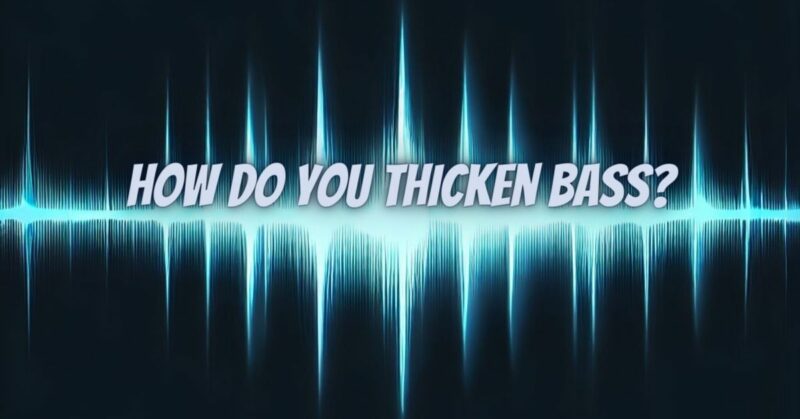In electronic music, bass is often used to create a deep and powerful foundation for the track. To thicken bass in electronic music, you can try using a combination of EQ, compression, layering, and subwoofers.
- EQ: Boost the frequencies in the 40Hz to 60Hz range. This will help your bass to stand out and be more impactful.
- Compression: Compress the bass to make it more consistent and punchy. However, be careful not to over-compress, as this can make your bass sound boomy and distorted.
- Layering: Layer multiple bass tracks together. This can be a great way to thicken up your bass sound without making it boomy or distorted. To layer bass, simply record multiple takes of your bass part and then mix them together. You can also try using different bass instruments or different EQ and compression settings on each track.
- Subwoofer: Use a subwoofer to get a much thicker and more powerful bass sound.
Hip-hop
In hip-hop, bass is often used to create a heavy and driving beat. To thicken bass in hip-hop, you can try using a combination of EQ and compression.
- EQ: Boost the frequencies in the 55Hz to 60Hz range. This will help your bass to sound more powerful and punchy.
- Compression: Compress the bass to make it even more punchy and consistent. However, be careful not to over-compress, as this can make your bass sound distorted.
Rock music
In rock music, bass is often used to add depth and weight to the overall sound. To thicken bass in rock music, you can try using a combination of EQ and compression.
- EQ: Boost the frequencies in the 40Hz to 50Hz range. This will help your bass to sound fuller and more present in the mix.
- Compression: Compress the bass to make it more consistent and even. However, be careful not to over-compress, as this can make your bass sound boomy and distorted.
Additional tips
- Use a spectrum analyzer to identify the fundamental frequency of your bass sound. This is the frequency that the sound is built around, and it is the frequency that you should focus on when EQing and compressing your bass.
- Cut any frequencies below 20Hz. These frequencies are not audible to most people, and they can take up headroom and make your mix sound muddy.
- Reference your bass mix to other commercial tracks in the same genre. This will help you to get a better idea of how your bass should sound in a real-world context.
Experimenting is the best way to find out what works best for your music. Try different combinations of EQ, compression, layering, and subwoofers until you get the bass sound that you’re happy with.


